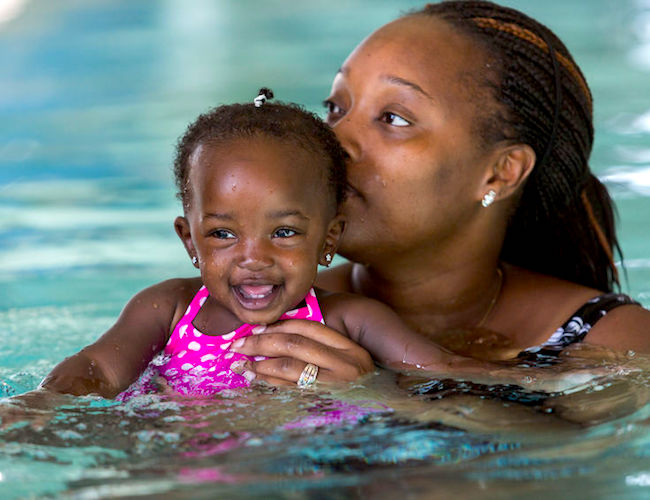How to introduce your toddler to swimming
It’s reassuring for you and your partner to begin your child on swim-savvy training soonest, and also a fun afternoon out for parent and tot.
Swimming swimming lessons are vital for your child – no matter their future swimming prowess.
Poolside tips for your child
• Early lessons teach babies how to float and attempt doggie paddle but, remember: your child’s swim coach should ideally be certified in CPR, first aid and water safety;
• Understand that early swim lessons show parent and kid how to have fun, safely, in the water – your under 2-yr-old is unlikely to emerge from these as a competent solo swimmer; and
• Whatever lessons you may enroll your toddler in, it is always your job to reinforce the fact that they should never jump into the water without mom, dad or another familiar adult being ready to catch them.
Talking about drowning
With drowning remaining a hot topic in South Africa, swim safety experts recommend that parents:
• Reiterate to children never go to swimming pools unsupervised;
• Tell them that even competent adult swimmers do not swim alone, because the sea, for example, can get very rough on occasion; and
• While swimming aids such as water wings and noodles can be plenty of fun, they are not sufficient to keep a youngster safely afloat without competent adult supervision.
Teaching your child to swim as young as possible
Swim South Africa qualified instructor Cindy Masters, says children who are introduced to swimming at a young age tend to be more confident and generally portray excellent gross motor skills. “Baby lessons, with a qualified baby swimming instructor, can start from as young as six months of age,” Masters advises.
“This should ideally take the form of a group class, where a parent or caregiver spends the entire time in the water with the child.”
From a safety perspective, a child under age two, after falling into the water, needs to be taught how to turn around and reach up to hold onto the side of the pool so that they can climb out again, Masters says.
Learning to float on the back is vitally important, because the face is out of the water and the child can breathe; they will also be taught how to paddle with their arms and to kick. “Children of this age will generally kick backwards, as they can feel the water against the bottom of their feet, and this will propel them forwards,” Masters says.
While flotation devices such as pool noodles may be used from time to time during their lessons, “the parent or an instructor will still maintain physical contact with the child throughout.”
IMAGE CREDIT: 123rf.com



